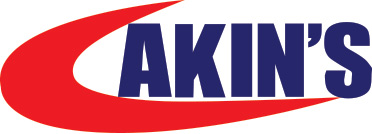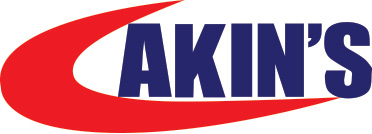
Door Security
Add a review FollowOverview
-
Founded Date April 3, 2007
-
Sectors General Labour
-
Posted Jobs 0
-
Viewed 15
Company Description
Emergency Storefront Board Up Tools To Help You Manage Your Daily Life Emergency Storefront Board Up Trick That Every Person Should Learn
Emergency Storefront Board Up: A Comprehensive Guide
In today’s unpredictable world, businesses face many obstacles, including severe climate condition, vandalism, or unanticipated emergency situations. One effective method of safeguarding stores is through using Emergency Storefront Board Up board-up techniques. This short article delves into the need and procedure of emergency storefront board-ups, using business owners a thorough understanding of how to safeguard their premises effectively.
Value of Emergency Storefront Board-Up
Storefront board-ups serve as a protective step that decreases damage throughout emergency situations. Whether it’s a natural disaster or an act of vandalism, a board-up can use numerous crucial advantages:

-
Protection from Damage: Quickly boarding up windows and doors prevents harmed areas from worsening or triggering injury.
-
Deterrence of Burglary and Vandalism: A boarded-up storefront deters bad guys from trying to break in.
-
Compliance with Local Ordinances: In certain jurisdictions, municipalities need organizations to secure their homes after damage events to prevent further destruction.
-
Insurance and Liability Concerns: Taking immediate action to secure a property can be important in insurance declares post-event.
-
Visual Considerations: A well-executed board-up can maintain a form of professionalism for customers who might see the property throughout healing efforts.
When Should Board-Ups Be Considered?
A prompt response is crucial in circumstances requiring a storefront board-up. Entrepreneur should consider the following scenarios for implementing board-ups:
-
Natural Disasters: Hurricanes, tornadoes, or snowstorms can threaten window stability.
-
Vandalism or Civil Unrest: Riots or looting can lead to significant damages to stores.
-
Mishaps: Vehicle crashes with shops can lead to broken glass and structural damage.
-
Jobs or Renovations: Long-term vacancies or during a remodel period where the space might be targeted.
Board-Up Materials and Techniques
Here is a brief summary of the materials utilized and techniques for a successful board-up:
Common Materials
-
Plywood: The most typical and practical option, usually 1/2 to 3/4 inch thick.
-
OSB (Oriented Strand Board): Often used as an economical alternative to plywood.
-
Metal Sheets: For higher security, though more pricey to implement.
-
Wooden Crates or Palettes: Can be used for temporary circumstances, particularly for odd shapes or sizes.
Techniques
-
Step and Cut: Properly measure doors and windows before cutting your boards to size.
-
Secure with Fasteners: Use screws instead of nails, as screws supply much better stability and can’t be easily eliminated once attached.
-
Anchor Boards: Use a diagonal brace method for larger openings; this disperses pressure and provides additional assistance.
-
Seal Edges: If weather are expected, sealing edges with caulking can supply extra protection against water invasion.
Table: Comparison of Board-Up Materials
| Product | Cost (per sq.ft) | Security | Resilience | Relieve of Installation |
|---|---|---|---|---|
| Plywood | ₤ 1.50 – ₤ 3.00 | High | Medium | Moderate |
| OSB | ₤ 1.00 – ₤ 2.50 | Medium | Medium | Moderate |
| Metal Sheets | ₤ 3.00 – ₤ 5.00 | Extremely High | High | Challenging |
| Wood Crates | ₤ 0.50 – ₤ 1.50 | Low | Low | Easy |
Steps to Execute an Emergency Storefront Board-Up
Step-by-Step Guide
1. Evaluate the Risk: Evaluate the condition of doors and windows. Recognize areas that require boarding.
2. Gather Materials: Accumulate your chosen materials, such as plywood and screws, along with required tools like a drill, measuring tape, and saw.
3. Measure and Cut Boards: Precisely measure the measurements of the openings to be boarded and cut the boards appropriately.
4. Install the Boards: Position the cut boards over the openings. Secure them firmly utilizing screws at periods of about 12 inches.
5. Produce a Barrier: For larger doors and windows, think about developing a cross-pattern with additional boards for enhanced strength.
6. Regular Maintenance: Once boarded up, routinely look for any indications of wear or damage. Change boards as necessary, particularly when exposed to harsh weather condition.
FAQs about Emergency Storefront Board-Ups
1. How rapidly can I board up my storefront?
The speed of boarding up a storefront largely depends on the level of damage and accessibility of materials. Ideally, you can board up a requirement window within 30 minutes.
2. Will board-ups avoid all damage?
While board-ups substantially reduce the threat of damage, they are not a sure-fire service. Extreme conditions might still cause compromise to the building’s stability.
3. Can I do a temporary board-up myself?
Yes, if you possess standard tools and experience following safety precautions, a temporary board-up can be carried out separately. Nevertheless, it’s a good idea to seek professional aid for massive or intricate circumstances.
4. Can I reuse boards after an emergency?
If boards stay intact and undamaged, they can be reused. Guarantee that they are inspected for signs of wear such as warping or rot.
5. How much does it cost to board up a storefront?
Expenses differ depending on products and labor expenses, generally ranging from ₤ 100 to ₤ 500 for most companies.
Emergency storefront board-ups are important for protecting business facilities from possible hazards, whether environmental or human-induced. By being proactive and knowledgeable about the procedure, business owners can decrease damage, deter potential criminal activity, and assist in a simpler healing post-disaster. Comprehending the value, materials, techniques, and checkpoints involved can ensure a comprehensive method to storefront protection, thus securing not just buildings but likewise the continued viability of organizations in unpredictable times.

